Page 1 of 2
Help with shrimp ID please.
Posted: Thu Mar 23, 2006 12:14 pm
by bochr
Hi
I need some help to ID these shrimp.
They were bought as Neocaridina sp. "coloured". Probably just a name made up by the shop.
They vary a lot in colur from almost transparant to yellow and sometimes brown with dark markings on the body.
Because of the curved back I think they might be C. simoni simoni, but I'm not sure.
Can anyone see what they are?
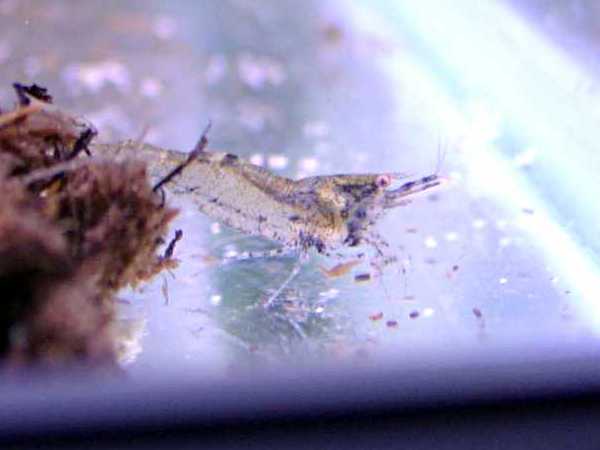
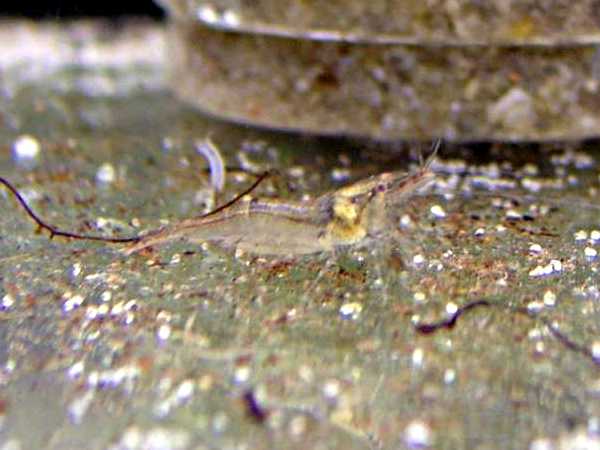
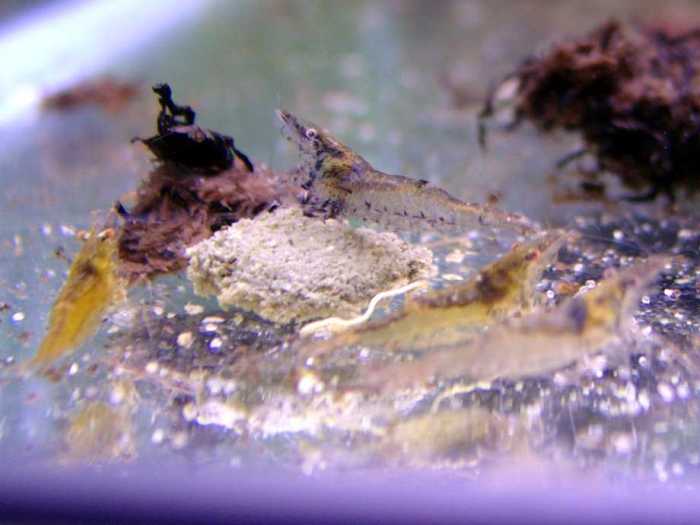
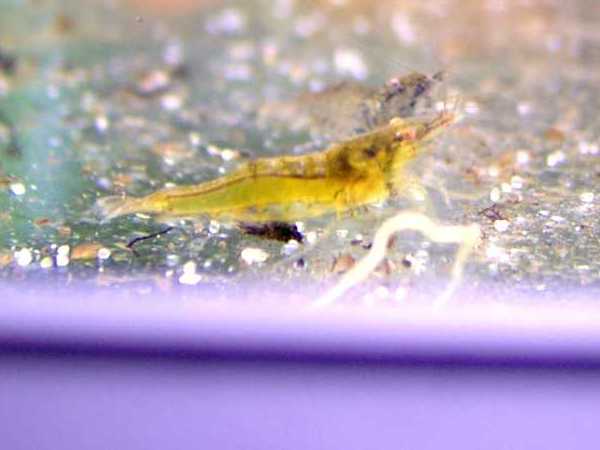
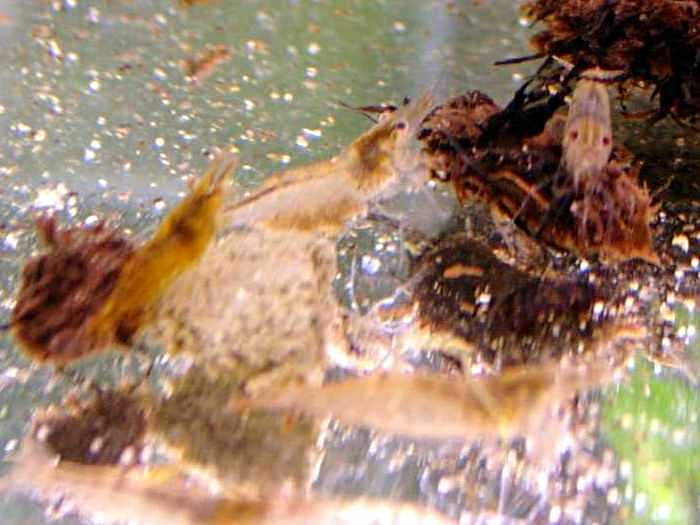
/ edit: updated image urls.
Posted: Fri Mar 24, 2006 9:11 pm
by Mustafa
No, this does not look like C. simoni simoni from what I can tell on the pictures. It does look like an interesting shrimp though..especially the orangish ones. Keep us up to date with these shrimp and let us know if they develop large or small eggs.
Posted: Thu Mar 30, 2006 5:56 am
by bochr
I managed to take a few more photos of the shrimps.
Since they are small - 20-25 mm. - and almost transparent, they are quite a challenge for my camera.
I have at least 3 females carrying eggs. The eggs look smaller than Bumblebee eggs, but not as small as Amano eggs.
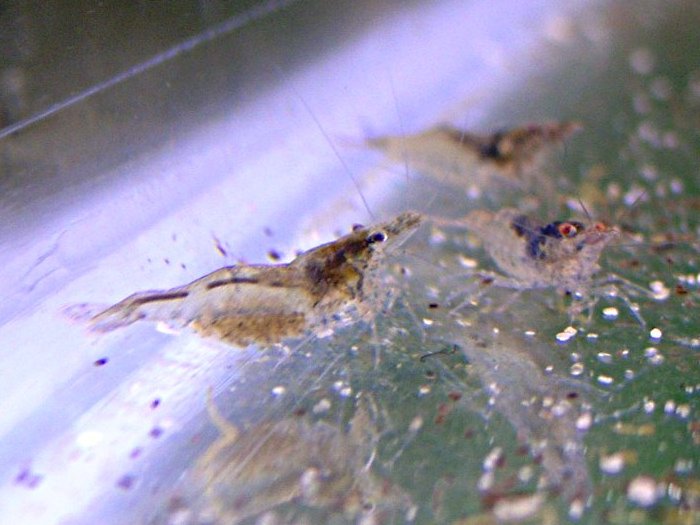
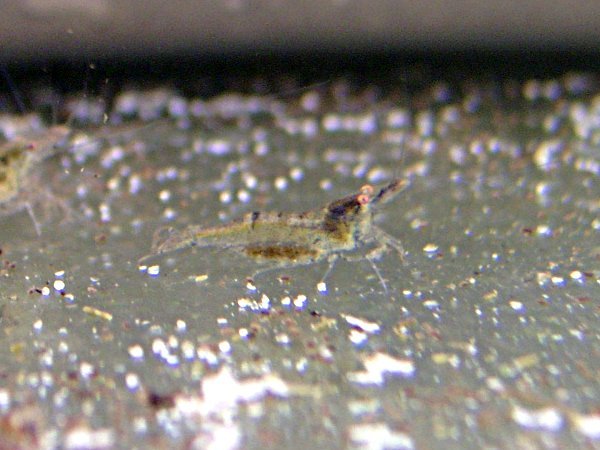
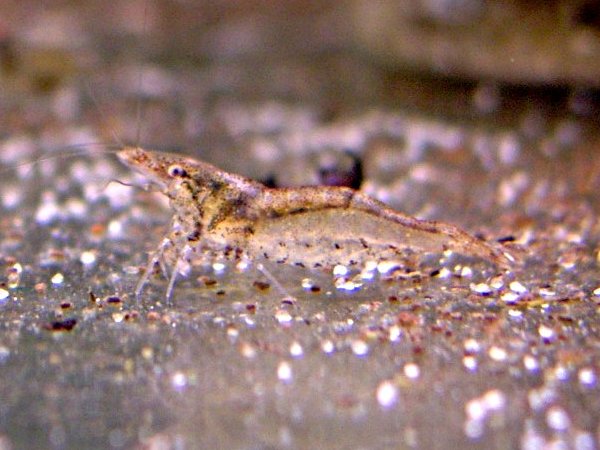
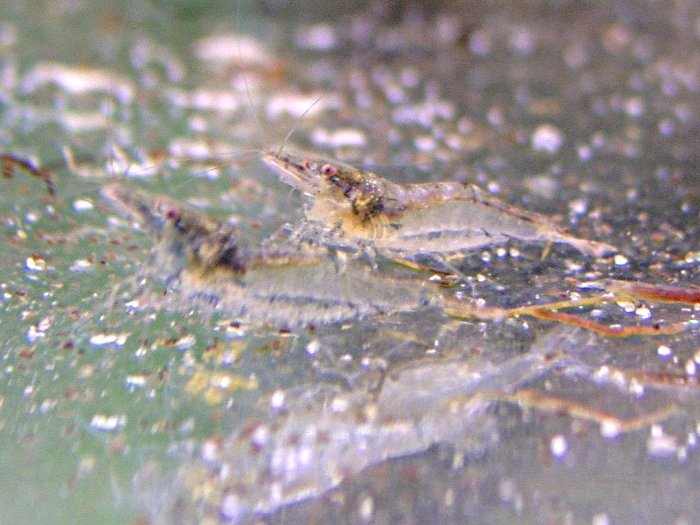
/edit: updated image urls.
Posted: Thu Mar 30, 2006 7:31 am
by milalic
It does not look like my caridina simoni simoni.
They look nice...how long have you had them?
Posted: Thu Mar 30, 2006 7:39 am
by bochr
I bought them in the beginning of february.
Posted: Thu Mar 30, 2006 10:46 am
by Mustafa
Hmm....if these shrimp have medium sized eggs they might actually produce pretty advanced larvae that grow up in freshwater. You might not even notice the larval stage since it's usually very short. If you start seeing little shrimp running around in your tank, let us know.

Posted: Thu Apr 13, 2006 5:08 am
by bochr
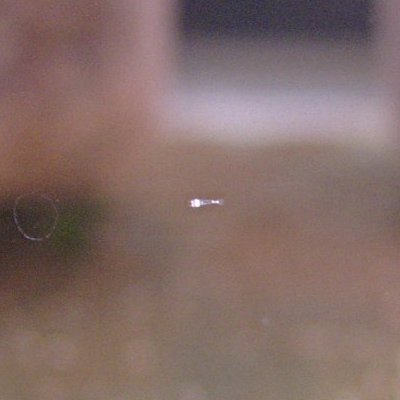
I have discovered the first shrimplets.
They are very small (1-1,5 mm.) and look like big Amano larvae.
They are holding on to the glass and "sitting" on the bottom, and some times swim in free water.
I haven't looked in the tank for a couple of days, so they could have startet as freeswimming.
/ edit: updated image url.
Posted: Fri Apr 14, 2006 8:51 am
by Mustafa
That's awesome!

Let's hope that most of them survive. Try to get a colony going of these. It's always important to try to establish breeding colonies of such rare and unusual shrimp. Who knows when they are going to be imported the next time or, worse, if they are even still around in nature.

I know animals like shrimp are not on the top of the list of environmentalist to protect them, but it is a real issue that shrimp are very sensitive to environmental changes and probably lots of species are dying out every year even with most species not even described/discovered by science. By breeding them we can contribute towards keeping their gene pools alive for the future.
Posted: Fri Apr 14, 2006 9:30 am
by bochr
Yes it's sad to see how the Earth is being abused.
I always try to breed the shrimps I have, and spread them to as many people as possible.
I still think my shrimps look and behave like C. simoni simoni. And I was wondering, if there is other subspecies besides simoni?
Posted: Fri Apr 14, 2006 12:40 pm
by Mustafa
bochr wrote:
I still think my shrimps look and behave like C. simoni simoni. And I was wondering, if there is other subspecies besides simoni?
Yes, there are tons of species that are either related to or look and behave like the sri lanka dwarf shrimp. However, I can tell you for sure that your shrimp are NOT sri lanka dwarf shrimp. Why? Because their rostrums are totally different among other things like body shape and coloration. It doesn't matter though. They don't have to be sri lanka dwarf shrimp after all. They are interesting enough just being what they are...whatever they are.


Posted: Fri Apr 14, 2006 1:00 pm
by bochr
Thanks for the info.
Yes they are very interesting, even though they are not simoni simoni.
I just "need" to know the names of the fish and shrimps in my tanks. Things don't feel right until I know

Posted: Fri Apr 14, 2006 3:56 pm
by Mustafa
bochr wrote:
I just "need" to know the names of the fish and shrimps in my tanks. Things don't feel right until I know

I know what you mean. I'm the same way. Unfortunately, we're both in a hobby where most species have not been identified or even scientifically described. Even most scientific names in circulation now are tentative as the species in question have been identified by other hobbyists and not professional scientists. And even scientists don't know what they are doing somtimes as they are relying on just morphology and descriptions from 50-100 years ago most of the time. So, we'll just have to have patience and wait until there is more interest in this field and more advances DNA analysis combined with live coloration analysis (scientists so far work with preserved, discolored dead shrimp) creates some clarity.
Posted: Sat Jul 01, 2006 10:45 pm
by bochr
Just a little update.
Hope that someone might have some new info on these shrimp.
Only 1-3 shrimps from each hatch survive.
And i have discoved something funny. These shrimps are very shy.
They don't seem happy out in the open, like other shrimps do. They usually move alongside stones og wood. When I move to their tank, they hide under leaves or stones or move back in the tank. None of my other shrimps do that.
Here's some new photos.
A close up.
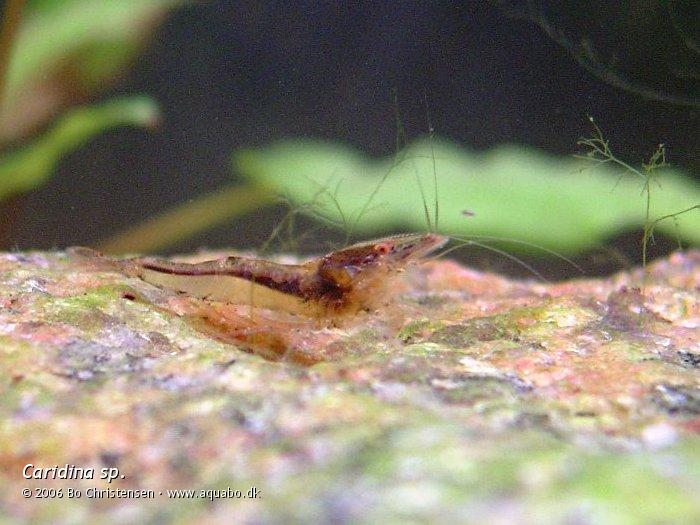
This one shows the different colors they have. The yellow one is allways yellow, the other ones shift in colors from transparent to brownis.
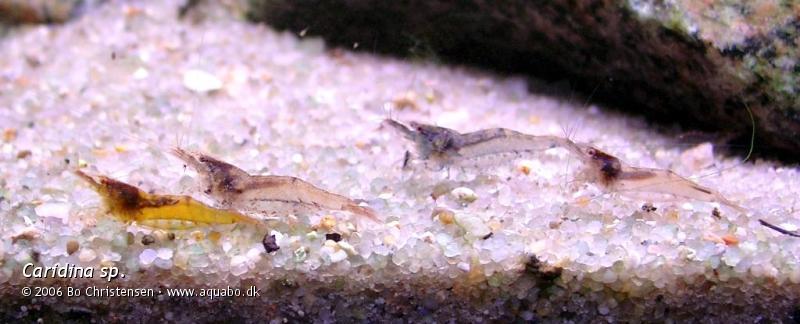
The yellow female carrying eggs. She have had eggs several times. None of the offspring has shown this yellow coloration.
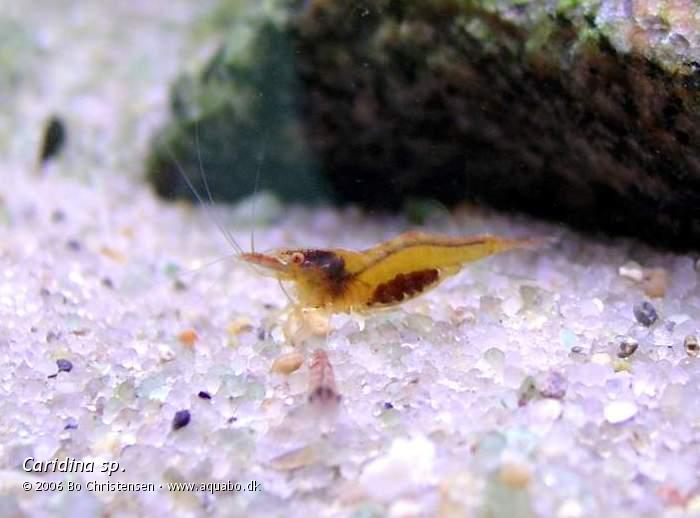
Another female carrying eggs.
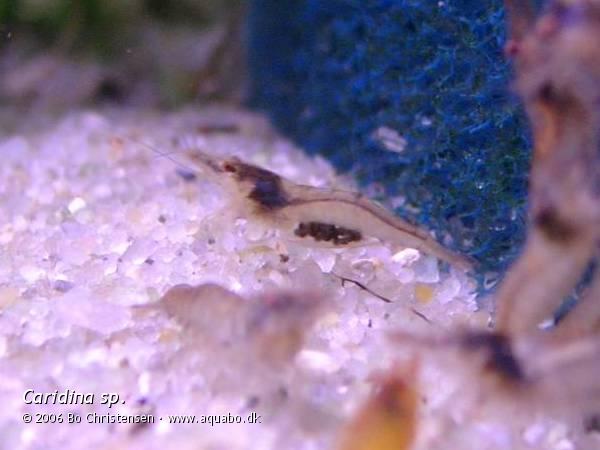
Shrimplet 6-7 mm. long.
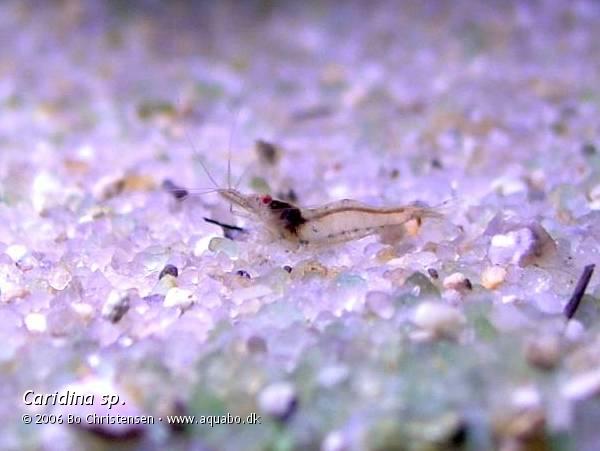
Posted: Sun Jul 02, 2006 7:10 am
by TKD
With genetics it could be possible for the yellow color to reapear in later offspring.
TKD
Posted: Sun Jul 02, 2006 9:10 pm
by Mustafa
Hi Bo,
Thanks for the update! Unfortunately, I still haven't seen anyone else with these shrimp besides you. Make sure that your population does not die out as these are very nice shrimp (whatever they are).
bochr wrote:
Only 1-3 shrimps from each hatch survive.
Hmmm...that usually happens because the water parameters are not to their liking. I bet there is an accumulation of waste products in the water, or they don't like your ph values. If you have alkaline ph right now, try using acidic and vice versa. Please keep the updates coming.



















